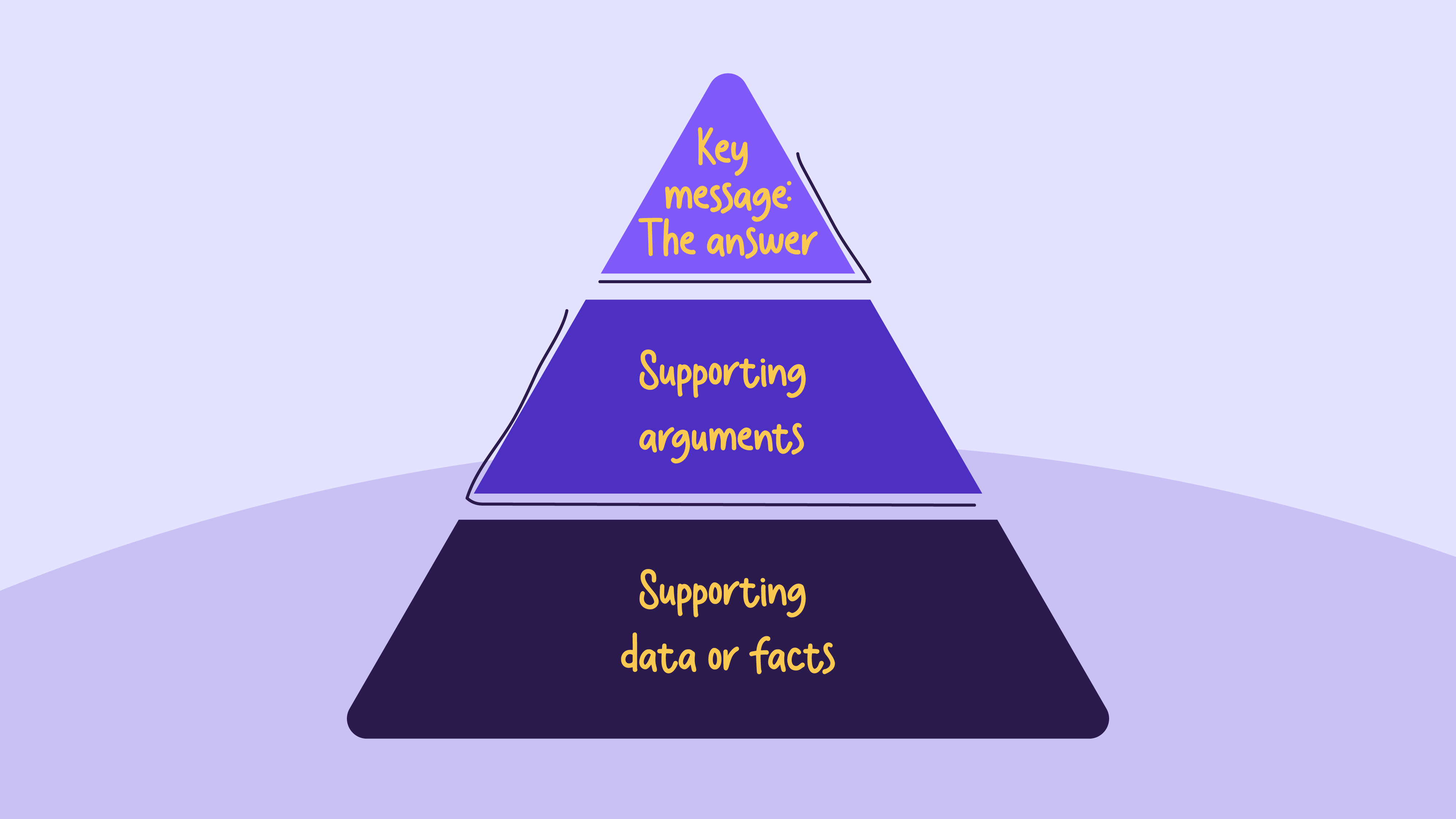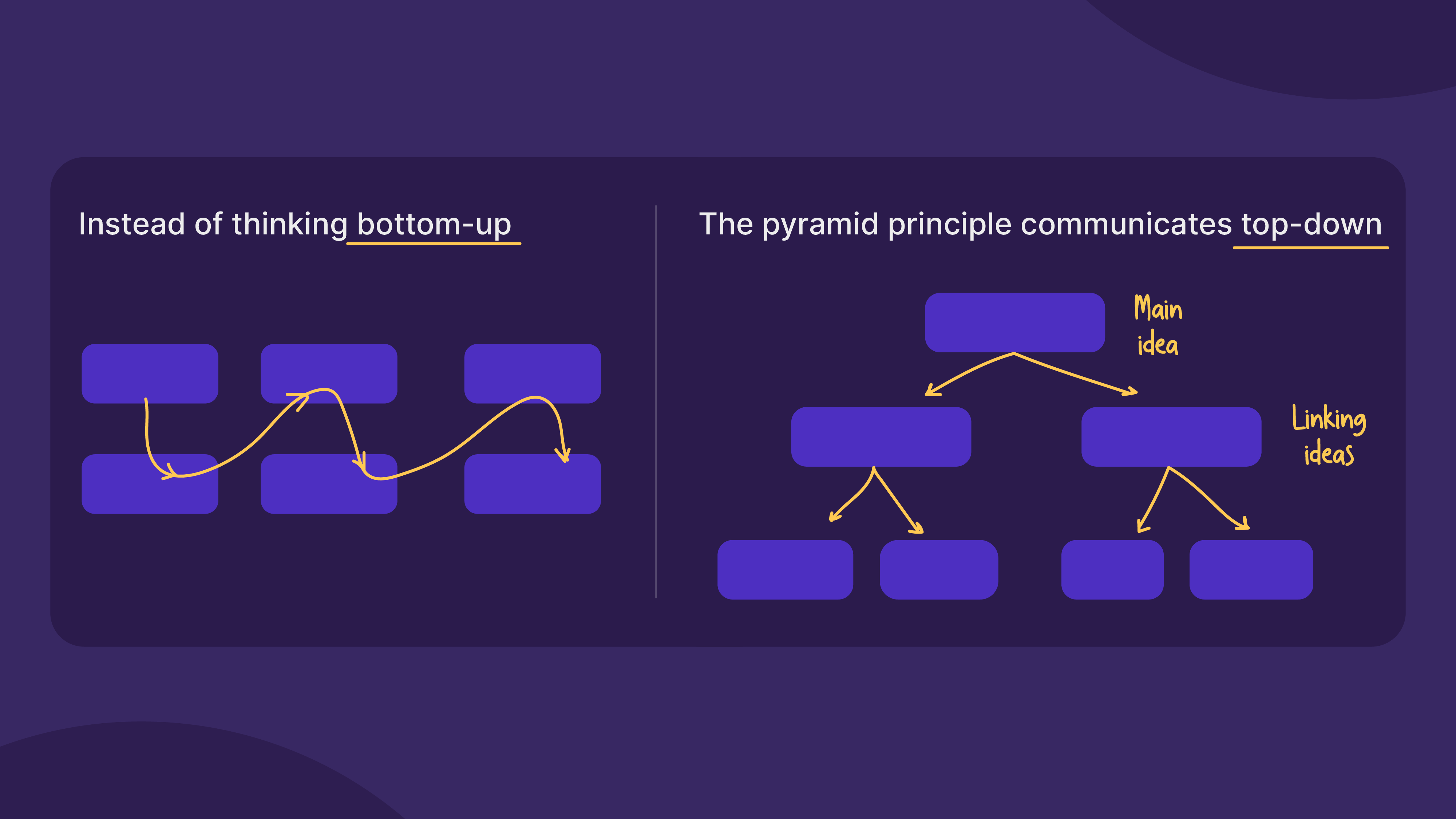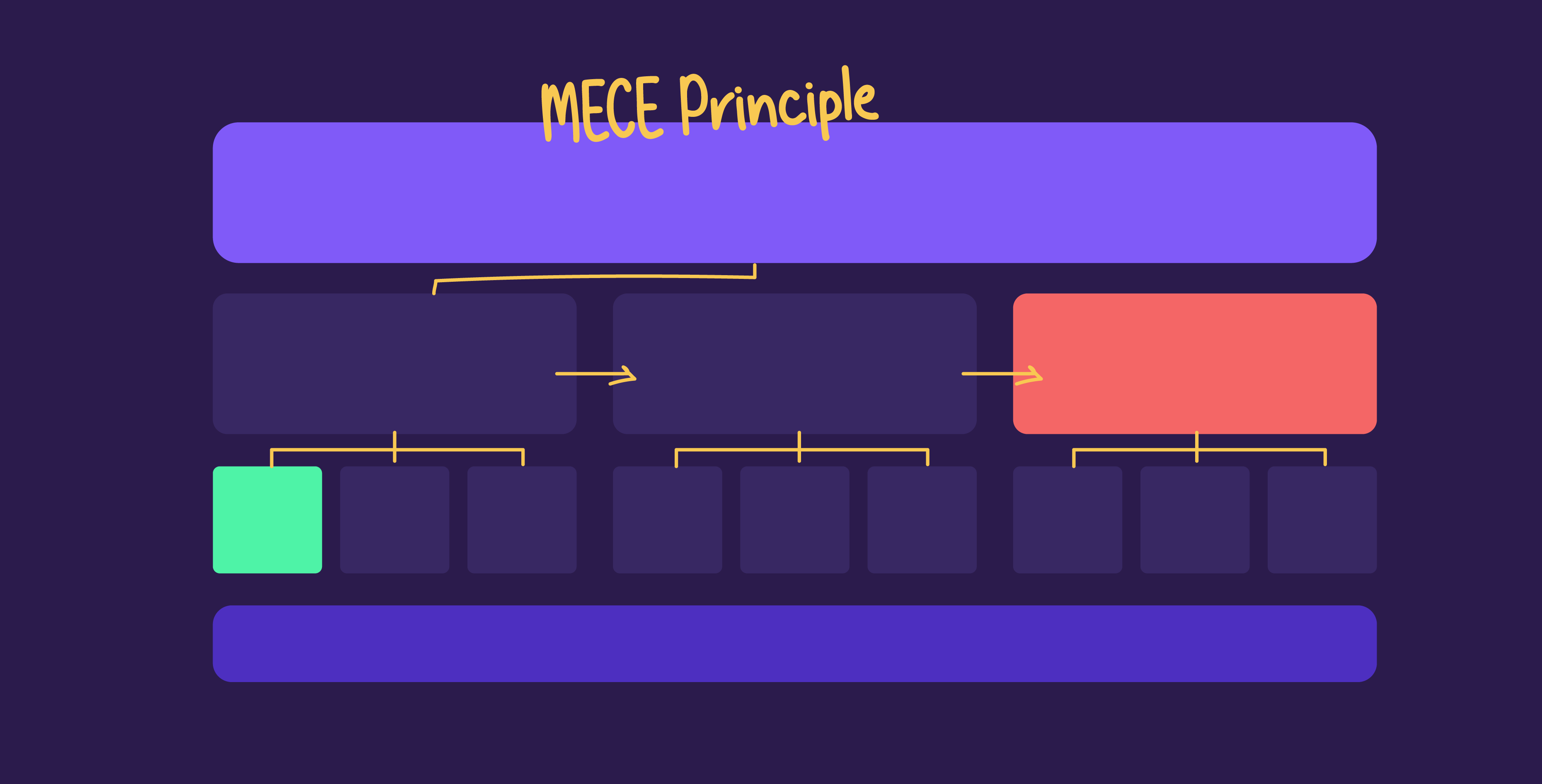11 July 2024
In the whirlwind of business landscapes, decisions are made at lightning speed, and the ability of consultants to communicate clearly is a required superpower. Enter the pyramid principle, a strategic approach that redefines persuasive storytelling in professional settings. This blog explores what the pyramid principle is and how it offers a framework for effective communication in consulting presentations.
What is the pyramid principle?
The pyramid principle is a communication tool developed by Barbara Minto where the argument is presented at the very beginning, in other words: you start with the answer.
Business presentations don’t need you to build suspense, and by presenting the conclusion first, you can use the rest of the presentation to support your idea with arguments, data, and facts. A pyramid’s hierarchical structure maps out how a presenter can build their argument at each level, increasing the detail at every step.
The pyramid principle structure
Key elements of the structure
The pyramid principle is an excellent tool for navigating complicated discussions with stakeholders and executives, facilitating efficient communication. It helps organize your presentation to provide more clarity and accuracy, allowing decision-makers to pick up your primary message more swiftly, ensuring their interest and engagement. The core elements of the pyramid principle are the top-level message, the supporting points, and the sub-points or evidence.
Top-level message
A presentation following the pyramid principle always starts with the conclusion and recommendations right away. On the pyramid, this is called the top-level message: the idea that represents the key takeaway you want your audience to walk away with. This apex summarizes the essence of your speech and provides a clear direction for it.
Supporting points
The secondary points bolster the central message by supporting and elaborating on it. These points offer further insights and analysis that strengthen the overall theme of the presentation as they provide deeper context and information.
Sub-points and evidence
Finally, back up key insights with details and evidence. The bottom of the pyramid is for the subpoints that represent more specific details that corroborate the supporting points. These include the analyses and summaries of the evidence you gather. These are also the data points that help your audience understand the context more clearly and how it relates to your main argument or recommendation.
The focus on the outcome
In the consulting world, you may be familiar with the ways information overload completely overwhelms listeners. One of the main obstacles for consulting audiences is the massive flood of information being dumped on them and the lack of clarity. Here, the pyramid principle slides in to save the day by offering a structure to present findings succinctly and clearly.
Arranging ideas based on recommendations first also provides a focus and tether so there is no need to wade through murky details before you get to the main takeaway. The pyramid principle breaks down a presentation into results-oriented formulas, for example:
The top-level message: Encouraging user-generated content (UGC) on social media increases website traffic and brand engagement.
Supporting point: Studies tell us that UGC can increase website traffic by up to 35% and brand engagement by up to 22%.
Sub-point and evidence: UGC leverages authentic content around your brand and builds trust with potential customers, driving organic traffic and fostering community around your brand.
What are the advantages of the pyramid principle?
The pyramid principles maintain a presentation’s clarity by presenting the recommendations upfront, ensuring that the main message is immediately clear to the audience. It streamlines and enhances the effectiveness of communication by structuring the information to lead to the core message. Not only does this approach facilitate better absorption of the message, but it also allows the listeners to evaluate how relevant each detail is to the central theme.
The hierarchical structure aligns with the listeners’ expectations and provides the answers upfront. The pyramid principle maps out the connection between different points, making it an impactful tool for communication.
In conclusion, the pyramid principles provide a more comfortable and structured approach to communication for presentations. By arranging information according to the pyramid principle, you can support your main argument by gradually building it up with evidence. Through this framework, you can embrace this approach to make your next presentation understood and remembered. With Prezlab’s presentation design services, we focus on telling stories that leave an impact on the audience. This makes it easier for decision-makers to understand and act on the information being presented.











